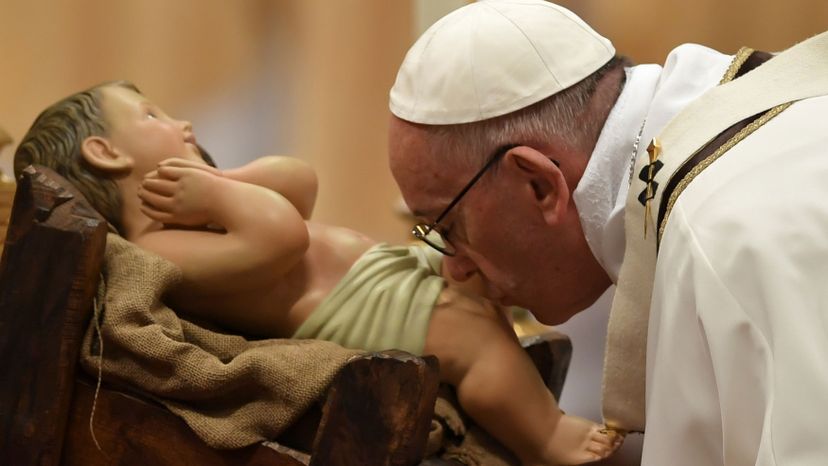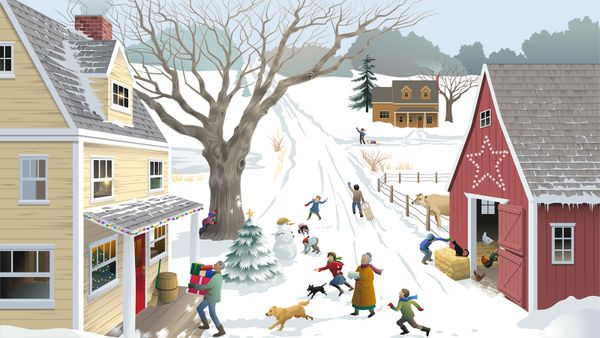Christmas Traditions in Italy

The Christmas season begins in Italy on the first Sunday of Advent, which is four Sundays before Christmas. In the cold winter weather of the northern mountains and in the mild weather of the south, Christmas fairs feature fireworks and bonfires along with holiday music. Families go to the Christmas markets to shop for gifts and new figures for the manger scene. Some families set up a Christmas tree and decorate it.
During novena, the nine days before and including Christmas Day, children go from house to house reciting Christmas verses for coins. The family sets up its presepio, or manger scene, on the first day of the novena. They gather before the presepio each morning or evening of novena to light candles and pray.
Advertisement
Some families put life-size figures of Mary and Joseph in their front yard. Both manger scenes and Christmas carols originated in Italy.
During this time, children write letters to their parents wishing them a merry Christmas, promising good behavior, and making a list of the gifts they hope to receive. The parents read these letters aloud at dinner. Then they toss them in the fireplace. The children chant to La Befana, the mythical Christmas witch, as their wishes go up the chimney.
When the first star appears in the evening sky on Christmas Eve, every family sets lighted candles in their windows to light the way for the Christ Child. They light candles around their presepio and pass the figure of the Baby Jesus from person to person, finally placing it tenderly in the manger. Then they enjoy a lavish meatless supper featuring fish or another type of seafood, vegetables, salads, antipasto, bread, pasta, and sweets. Later that night, everyone goes through the torch-lit streets on their way to Christmas Eve mass.
Christmas Day is reserved for church, family, and feasting. Some Italian children receive gifts from Baby Jesus or from Babbo Natale, as Father Christmas is called. Then everyone sits down to a big Christmas dinner. This often includes capon or another roasted meat. Pannettone, a yeast cake filled with fruit, and panforte, a dense honey cake spiced with cloves and cinnamon, are popular sweets, along with cassata, which includes ice cream and fruit.
New Year's Day is when friends get together and visit. It is also the day when Italians exchange gifts with each other. The children have to wait until January 6 to get their gifts from La Befana, whose name comes from the Italian word for Epiphany.
January 6 is also called Three Kings Day, because it is the day the Three Kings visited the Christ Child in Bethlehem long ago. The legend says that old Befana was too busy cleaning house to help the Wise Men. Now the aged wanderer flies through the air on her broomstick looking for the Christ Child on the eve of Epiphany. Children set out their shoes by the fireplace on that night, hoping for the gifts they asked for during novena. La Befana leaves candy and gifts for children that are good.
During the Christmas season, Italian families sing a special song called Shepherds' Carol in honor of the zampognari, or real shepherds who came to town at Advent and went from house-to-house playing bagpipes and singing songs about the birth of Jesus. In some towns, bagpipers dressed as shepherds still play and sing in front of the neighborhoods' presepios.

